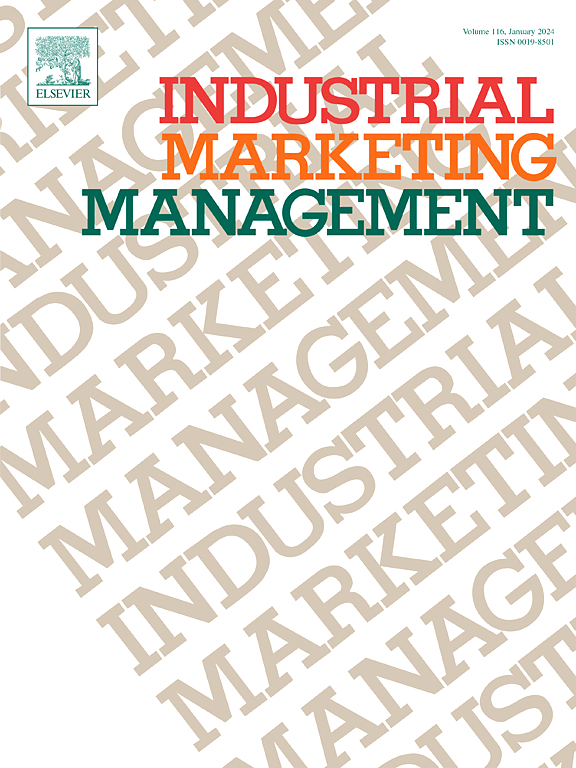The emergence, stabilization, and destabilization of resources: Gated reverb and the sound of the 80s
IF 7.5
1区 管理学
Q1 BUSINESS
引用次数: 0
Abstract
B2B marketing scholarship has begun to question the traditional perspective of resources as stable entities that are ‘out there’ for firms to be acquired, transformed, or leveraged to create value. It has instead begun to adopt a more processual perspective emphasizing resources as situational phenomena that come into existence through their use and may also fade away again. While such a process-relational perspective holds great promise to advance B2B resource thinking, it is still nascent, being marked by lingering conceptual inconsistencies and a relative lack of empirical research. Against this backdrop, our study explores the process of resource emergence, stabilization and destabilization, by drawing on the revelatory case study of the “gated reverb drum sound”, popularly known as “the sound of the 80s”. Using archival and primary data, we develop a process model that shows how resources emerge, gain traction and decline over time by moving through four phases: discovering, prototyping, commodifying, and overusing. We illuminate the material-discursive practices making up these phases, and the resource characteristics they enact at different points in time. Our findings provide a new way of thinking about the lifecycle of resources, and the involvement of humans and non-humans in this process, with significant implications for theory and practice.
资源的出现、稳定和不稳定:门控混响和80年代的声音
B2B营销学者已经开始质疑传统的观点,即资源是稳定的实体,企业可以通过收购、改造或杠杆来创造价值。相反,它开始采用一种更加过程化的观点,强调资源是一种情境现象,通过使用资源而产生,也可能再次消失。虽然这种流程关系视角对推进B2B资源思维有着巨大的希望,但它仍处于萌芽阶段,其特点是概念上的不一致和相对缺乏实证研究。在此背景下,我们的研究通过对“门控混响鼓声”(俗称“80年代之声”)的启发性案例研究,探讨了资源产生、稳定和不稳定的过程。使用档案和原始数据,我们开发了一个过程模型,该模型通过四个阶段:发现、原型、商品化和过度使用来显示资源如何随着时间的推移而出现、获得牵引力和减少。我们阐明了构成这些阶段的物质话语实践,以及它们在不同时间点上制定的资源特征。我们的发现提供了一种思考资源生命周期的新方法,以及人类和非人类在这一过程中的参与,对理论和实践具有重要意义。
本文章由计算机程序翻译,如有差异,请以英文原文为准。
求助全文
约1分钟内获得全文
求助全文
来源期刊

Industrial Marketing Management
Multiple-
CiteScore
17.30
自引率
20.40%
发文量
255
期刊介绍:
Industrial Marketing Management delivers theoretical, empirical, and case-based research tailored to the requirements of marketing scholars and practitioners engaged in industrial and business-to-business markets. With an editorial review board comprising prominent international scholars and practitioners, the journal ensures a harmonious blend of theory and practical applications in all articles. Scholars from North America, Europe, Australia/New Zealand, Asia, and various global regions contribute the latest findings to enhance the effectiveness and efficiency of industrial markets. This holistic approach keeps readers informed with the most timely data and contemporary insights essential for informed marketing decisions and strategies in global industrial and business-to-business markets.
 求助内容:
求助内容: 应助结果提醒方式:
应助结果提醒方式:


